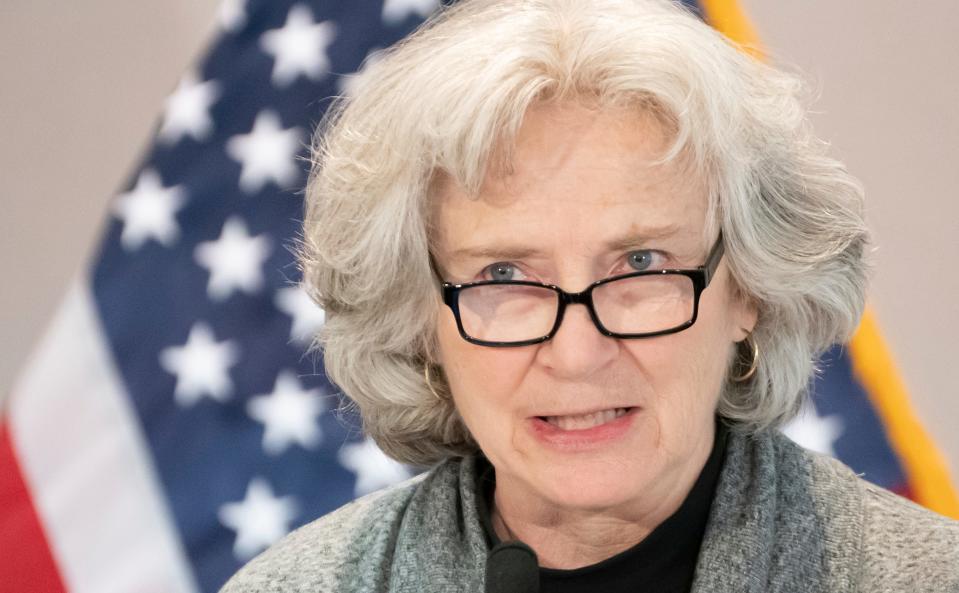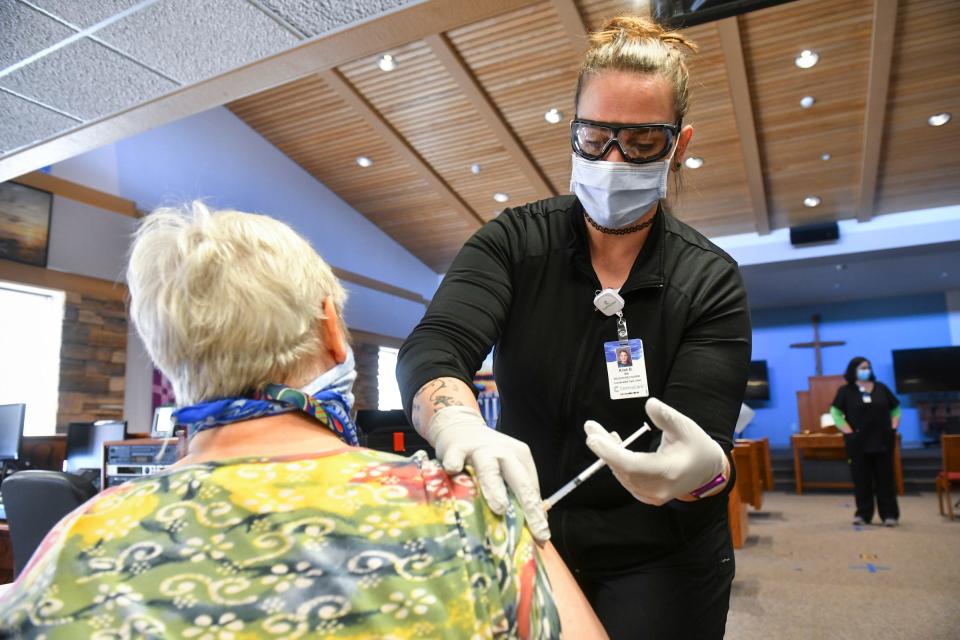COVID omicron 'circulating like wildfire,' resulting in full hospitals and workforce issues
The Minnesota Department of Health recorded 7,833 new cases of COVID-19, 33 deaths, 112 additional hospitalizations and 15 additional Minnesotans in the intensive care unit Friday, Commissioner Jan Malcolm said in a press conference.
Malcolm said although the department is still tracking and publishing case numbers, these case numbers are only part of the picture because many Minnesotans are using rapid over the counter and at-home tests in the omicron surge, and those results are not reported to public health authorities.
This means the case numbers in the state are likely much higher than MDH reports.

More: More than 220 employees on leave of absence at CentraCare after refusing COVID-19 vaccine
"The [number of] cases that are coming through our public testing locations and our information systems and our human systems [every day] are so large … that at times we simply can't keep up with the volume in terms of some of those technical aspects of processing and documenting results," Malcolm said. "We're literally being flooded with these incoming lab reports and we are seeing very, very high numbers of cases."
Malcolm said Minnesotans need to know that the omicron variant "has most definitely reached Minnesota and is frankly, circulating like wildfire" throughout the state and the country. According to the latest data, she said omicron accounts for about 90% or more of all COVID cases in the state.
More COVID-19 cases means more hospitalizations, workplace disruptions
Although the omicron variant seems to cause less severe illness on average than previous strains, especially for vaccinated and boosted people, those who are unvaccinated, older or have underlying health conditions still have a significant risk of severe illness.
Malcolm said omicron's contagiousness also means there will be more cases of COVID-19 overall, "and we will see a lot more people needing treatment at the same time."
More: Children ages 12-15 now eligible for COVID-19 booster shot at CentraCare
"It's not a good thing. What that means is that our already very strained hospitals, long-term care and health care systems are going to be having yet another significant challenge over the next few weeks while omicron cases surge," she said. "And having a lot of people sick at the same time is also likely to create disruptions in other services. … We really want the public and the customers of these businesses to recognize the strain that these workforce challenges are going to pose."
Rather than sit as "helpless victims of this omicron tsunami," Malcolm said Minnesotans can and should be taking action to reduce the spread of COVID-19 and protect the capacity of hospitals, businesses, schools, their neighbors and families.
Minnesotans can do this by getting vaccinated and boosted, wearing high quality masks, staying home when you're sick (even if you think it's a cold), washing hands frequently and taking serious steps to mitigate the risk of transmission.
Because the omicron variant is still relatively new in Minnesota since it was recorded in the state last month, "frankly, we don't know exactly how all this will play out in Minnesota in the next few weeks," Malcolm said.
"We are watching with concern and alarm what is happening around the United States. And certainly we'll keep track of any any patterns that might help us predict what what the likely shape of the curve might be here," she said.
Malcolm said the state is expanding testing sites and will be distributing 1.8 million rapid COVID-19 tests around Minnesota, including to community partners, food banks and health agencies.
More: Worried about the omicron variant? Here's where you can get a COVID-19 test in Minnesota
Follow CDC guidance, don't go to ER for a COVID-19 test
After Christmas, the Centers for Disease Control cut the isolation time for Americans who test positive from 10 days to five. CDC officials say the new guidance is keeping with the growing evidence that people with COVID-19 are most infectious in the two days before and three days after symptoms develop.
At the press conference Friday, MDH Infectious Disease Director Kris Ehresmann said the department supports the updated CDC guidelines and encourages Minnesotans to follow them. The state will be providing more materials and updating information on its website soon.
"These updated recommendations reflect the societal impact that is the potential critical infrastructure and staffing shortages that we expect to see in the coming days, as well as some growing science on disease severity for when and how long a person is maximally infectious," Ehresmann said. "What's really important is that this new isolation and quarantine guidance emphasizes the continued need to wear masks to prevent COVID-19 transmission."

More: See how the COVID-19 pandemic unfolded in Minnesota in 2021
On Friday, the Minnesota Hospital Association released a statement urging Minnesotans to seek COVID-19 testing at sites other than hospital emergency departments after a high volume of patients drove up wait times for medical emergencies at several hospitals around the state.
"We have run out of words to describe what we are undergoing — a crisis does not even come close; hospitals are literally full," the statement said. "To continue to serve the high volume of patients that need care for strokes, heart attacks, emergency surgeries, motor vehicle accidents and COVID-19, we need your help now."
In the media call, Malcolm addressed the statement and said hospitals are very full right now, not just with COVID-19 patients but with patients with other critical care needs unrelated to COVID-19.
"We've talked a lot about the fact that the staff, doctors, nurses, respiratory therapists, everybody have been running flat out for two years now. And they're exhausted. And some that have moved on, moved to different specialties, left altogether or gone to part-time just as a way to continue to take care of their own selves," she said. "So we have less staffing than we had during the biggest peak. So it's not an issue of how many beds we have, it's an issue of how many skilled staff we have to care for people."
Becca Most is a cities reporter with the St. Cloud Times. Reach her at 320-241-8213 or bmost@stcloudtimes.com. Follow her on Twitter at @becca_most.
Support local journalism. Subscribe to sctimes.com today.
This article originally appeared on St. Cloud Times: COVID-19 omicron spread causing full hospitals, workforce issues in MN

